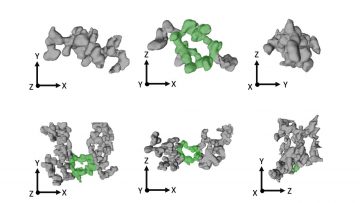Energy and Aerosols Laboratory
Aerosols are particles of liquid or solid suspended in a gas. Nanoparticles of soot and metal oxides often form in high-temperature environments, such as flames. These particles are typically fractal-like agglomerates of primary particles, and have deleterious effects on human health and climate.
At the Energy and Aerosols Laboratory (EAL) we study the behaviour and properties of aerosols in engineered systems. Although aerosol processes can be important to materials synthesis, EAL focusses on the particles with negative impacts that we would like to control at the source or remove. We undertake fundamental research on the measurement of soot (Black Carbon) as well as applied research on aerosols produced in combustion (engines, fires, flares), aerosols in buildings (filtration, energy recovery units, ventilation design) and industrial processes such as powder classification. Our belief at EAL is that truly new insights will come from experimental research, but theoretical modelling is essential to interpretation of measurements.
During the global pandemic of 2020, our lab has been busy working on improved methods of reducing airborne transmission of SARS-CoV2 via droplets and aerosols. This work has included testing of fabrics for improvised facemasks, participation in the provincial panel on Aerosol Generating Medical Procedures, and working with local health authorities on the most effective use of air purifiers in multi-patient hospital rooms. I’ve updated the researcher page to include some opinions on a few more controversial issues.
As the global pandemic tapers off (very slowly), we recall the climate emergency that has been brewing for my entire life. COP26 may be somewhat helpful, but it seems far too little, far too late. I’ve started a research project on Marine Cloud Brightening, a controversial emergency first aid treatment for the climate. I’m looking for graduate and undergraduates for this project.
The UBC Energy and Aerosols Group is a member of FlareNet. The theoretical work will investigate the relation between soot micro- and nanostructure and the optical properties of the aerosols that are relevant to climate change. The experimental research will include development of an unmanned aerial vehicle to characterize flare plumes in the field.

Tomographic reconstruction of soot from a gas flare.